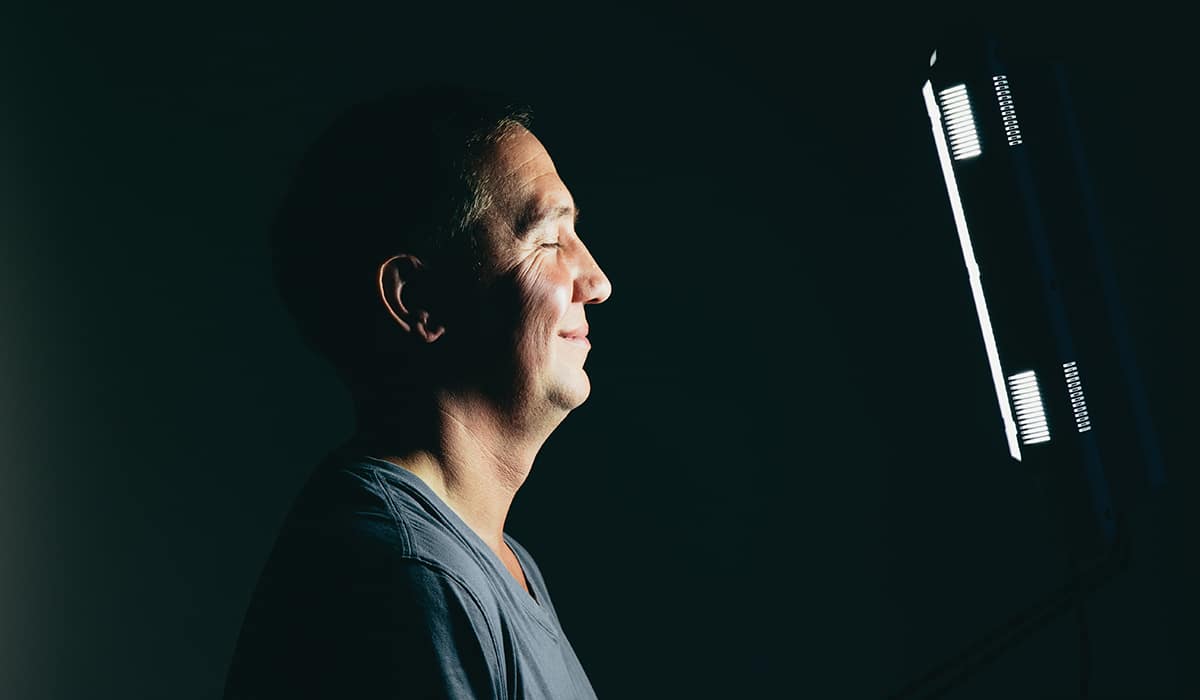Learn the science behind seasonal affective disorder and how the brain responds to daylight .
Seasonal affective disorder (SAD), often referred to as winter depression, is a form of depression brought about by the changing pattern of the seasons. Many people who suffer from SAD, which typically starts in autumn and lasts throughout winter, experience symptoms such as lethargy, despair, and a general loss of interest in everyday activities. Why some people experience SAD and others do not remains largely a mystery. However, there are many theories, including the seasons throwing your body clock out of sync.
Known as the circadian rhythm, the body generally follows a sleep-wake cycle across 24 hours that’s attuned to the body’s exposure to natural sunlight. Increasing light levels at dawn fi re up the brain’s production of the feel-good hormone serotonin, while decreased light levels at dusk slow the rate of serotonin production and, in its place, start the production of the sleepy hormone melatonin.
During winter, when light levels during the daytime are at their lowest, serotonin production is also at its lowest, while melatonin continues to be released. For some this can leave them longing for summer and feeling symptoms of SAD. However, SAD isn’t strictly associated with the darker winter months. During the bright, warm weather of summer and spring, excessive daylight can lead to the reduction of melatonin production to the point at which normal sleep is affected. This can also lead to symptoms of SAD.
Studies of families and twins have found that there may be a hereditary explanation for the expression of SAD. From the differences in genes involved in the transport of serotonin to those keeping the circadian rhythm in check, scientists have suggested that SAD may be caused by changes in our DNA. One study by the University of South Wales found that people with blue eyes were less likely to experience SAD than those with brown eyes. While the scientists say more research is needed to explain their findings, it’s possible that blue eyes are more sensitive to light and have a different threshold to brown eyes for the release of melatonin during the daytime.
Seasonal Genes
SAD isn’t the only way that the seasons can alter how our bodies function. In 2015 a team of international scientists discovered that the seasons could change human genes, especially those involved with immunity and inflammation. After collecting and analysing samples of blood and tissue from 16 000 people from around the globe, the researchers found that, during December to February for those living north of the equator, and June to August for those south of the equator, genes associated with the body’s immune system were more active compared to other seasons. However, among those that live in warm climates near the equator, which experience little seasonal change, the same genes were more active during the rainy season.
Making Melatonin
1. Light
During the daytime the brain triggers the release of serotonin. However, under low light that shifts to the release of melatonin being triggered.
2. Signal to the pacemaker
Light enters the eye and triggers a signal from the brain’s pacemaker, the suprachiasmatic nucleus.
3. Sending a signal
The signal then travels to the pineal gland via a collection of neurons called the superior cervical ganglion.
4. Hormone release
Once at the pineal gland, the signal stimulates the organ to release melatonin.
5. Melatonin
This hormone acts as the body’s natural sedative and encourages the body to fall asleep.
6. Overproduction
When the production of melatonin is out of sync with the body’s sleep-wake cycle, the effects of SAD are felt.

Light Therapy
Since the 1980s one of the most widely used treatments to tackle SAD is light therapy. Sufferers of SAD sit in front of artificial light emanating from a device called a light box, typically in the morning, to stimulate the production of serotonin and reduce the production of melatonin. Unlike other lamps, such as those used for tanning, these light boxes come with filters to remove harmful ultraviolet light that can damage the skin and eyes. Some studies have shown that between 30 and 45 minutes of regular exposure to a light box at around 10 000 lux, which is around the intensity of light the Sun provides in the morning, is effective in treating SAD. Sufferers may experience side effects such as headaches or skin irritation during use so it’s always advised to seek medical advice before using a light box.
Words: Scott Dutfield
Imagery: Getty/Alamay







